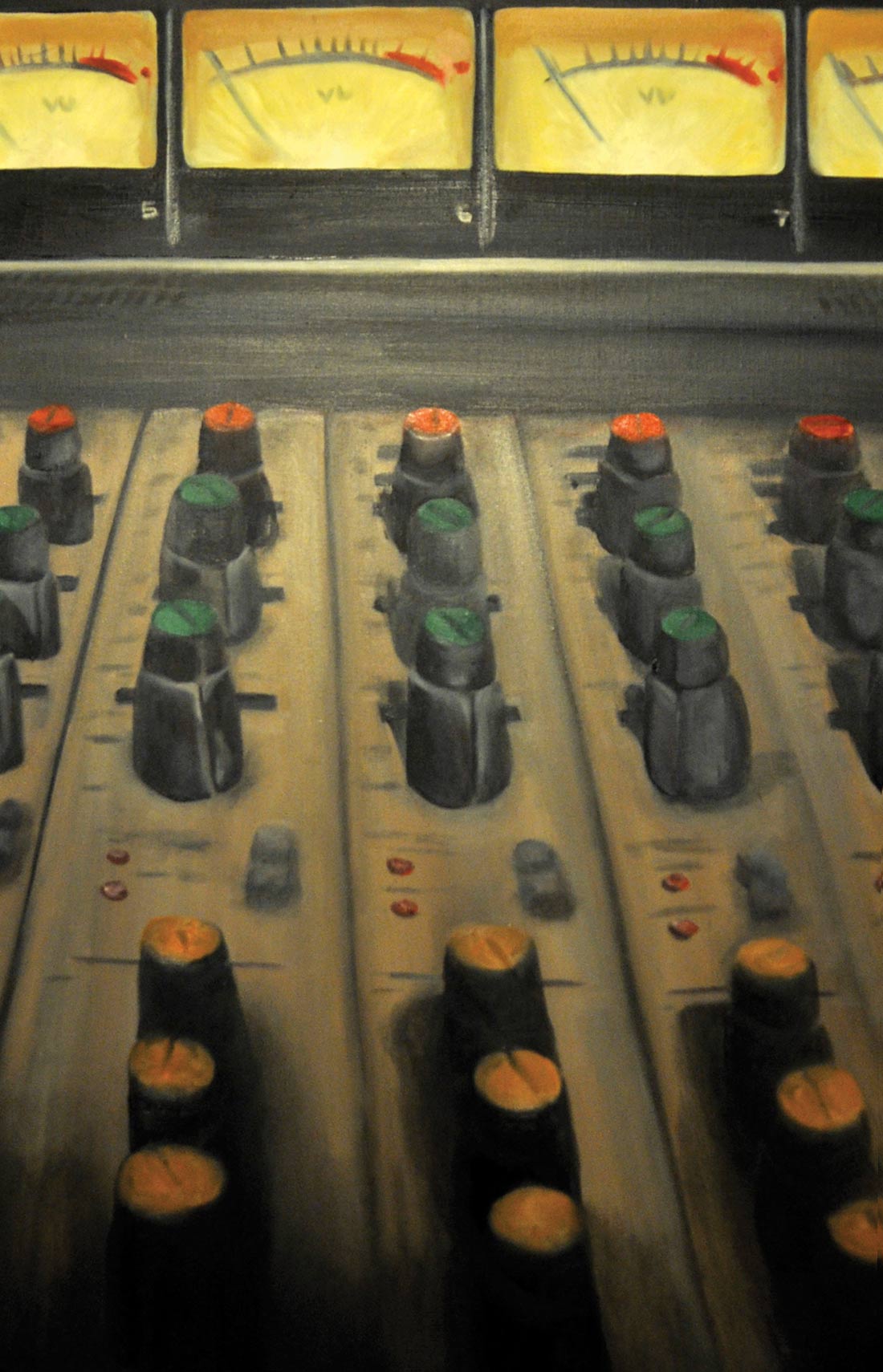Focusrite named the Forte after the groundbreaking console Rupert Neve designed for Air Studios. No doubt this was in an effort to differentiate the unit from the company's popular Scarlet and Saffire lines. In person, the Forte is slightly larger than a paperback book, and it sports a solid aluminum shell, a color OLED display, four touch buttons, and a large rotary encoder knob. While there is some resemblance to the competing Apogee Duet 2 [Tape Op #89], the Forte has more of a sleek Apple-like hardware appearance. Both Mac and PC compatible, it requires a USB 2.0-compliant port and OS X 10.7 or Windows 7 (32 or 64-bit). Normally, the Forte runs in USB low-power mode, using juice from the USB cable. Adding the included wall-wart power supply increases the available gain for headphones and line outputs and enables 48V phantom power.
A provided breakout cable is required for microphone (XLR) and line/instrument (TRS) inputs. Balanced line and headphone jacks are on the main unit. Thus, editing and playback can be done without the extra cabling. The wiring loom seems sturdy - Amphenol connectors handle the fan-out while a proprietary multi-pin connector (don't lose it) terminates the Forte side. But quality comes with a price. In this case it's weight. While the unit-side connector snap-locks in place, I fear extended dangling of the cables would lead to undue stress on the jack on the Forte. The large rotary encoder is smooth, and it makes a nice monitor volume knob. Depending on your DAW, you can also map features to it, including jog-shuttle.
Included is a custom control application, which allows the configuration of low-latency monitoring, mic-preamp level adjustment, and other features. Honestly, just launch this application and keep it ready in an open window; I found it much faster to use than the hardware interface, and I had an easier time making routing changes. Speaking of software, the Forte bundle includes a license for the Focusrite Midnight plug-in suite. These are premium emulations of the ISA 110 equalizer and ISA 130 compressor, not some throw away titles. I know people that happily paid $99 to own them.
Simple to connect? Check. Works with Mac or PC? Check. Comes with software and a touch screen? Check. This looks nice. But let's move to its sound, which is why most people are still reading. According to the manufacturer, the Forte employs two of the latest design of Focusrite's remote-controlled microphone preamps. These are paired with the company's best 24-bit A/D and D/A converters. My tests confirmed that this is a very good sounding interface. In fact, it made me want to try their new flagship RedNet product line. I dare say there are few compact USB interfaces that can compete with the sound quality of the Forte.
The first test was a Taylor guitar using a pair of AKG C 1000S mics [Tape Op #35] in X-Y configuration. I enabled the Forte's analog high-pass filters to reduce some of the body boom and positioned the mics about 3 ft away. The recording was detailed, spacious, and natural sounding. I chose the AKGs and the Taylor to determine how the Forte would resolve harmonic and high-frequency content. Lesser interfaces would have distorted or sounded harsh. The Forte found this combination to be no obstacle. On spoken voice through a Shure SM7 [#36], the Forte sounded clear and open. At this point, I noticed how nice the headphone amp sounded, having tried a range of brands from Audio-Technica to Yamaha to Shure. I also noted that a singer-songwriter could make some very good recordings with just a few good mics and the Forte. We continued to use the unit for various sources and on different computers. In every case we commented how much better the Forte sounded than the USB interfaces we had been using.
For the last stress test, we took the Forte on location to record impulse samples for Altiverb [Tape Op #28]. We purposefully took a laptop that had never used the Forte, and set up on site. Using a pair of Neumann KM 184s, we tracked several sets of impulse sweeps. Normally, we would take a pair of Millennia Media TD-1 preamps for this job, but the Forte was more than sufficient to manage the complicated decays of the sampled rooms (not to mention how much lighter our backpack was without the TD-1 pair inside). The MacBook we took to the job immediately recognized the Forte, and after installing the control software, we were running in minutes.
We experienced a minor issue on the remote test when we needed to route the test tone out of the Forte while avoiding a feedback loop from the mics' signals. I had a problem doing this on the touchscreen, but the control software did the trick in a few seconds. Of course, had I read the furnished manual, I would have known how to correctly use the screen. The only other quibble was the default volume level. At power up, the main output seems to be pretty low. We often had to turn the control knob a lot to get a workable level.
If you can make due with two inputs, and I believe many artists can, the Forte has my strong recommendation. As of this writing, it provides some of best sounding preamps and converters on a portable mobile device. I believe you would need to step up to much more expensive offerings for improved input and sound quality. Considering that the wiring loom, power adapter, and plug-ins are included in the bundle, I dare suggest the Forte is an amazing bang-for-the-buck option. I know there are options out there at lower prices, but you really do get what you pay for, and the audio quality of the Forte is worth every penny.




_disp_horizontal_bw.jpg)